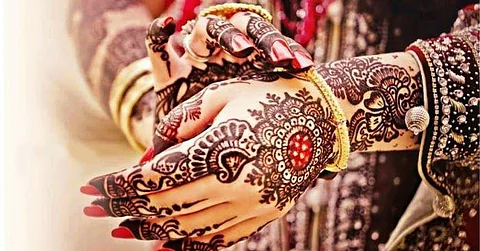There isn't a single soul on this planet that hasn't made mistakes. While some learn from their mistakes and revamp themselves into better individuals, others get sucked into an endless pit of regret. An important part of rising from one's mistakes is to say sorry and make amends. An act of redemption not only helps one let go of the past but also raises the morality of the individual.
In Hinduism, this act of repentance and redemption is known as Prayashchit. It is derived from the word praya, which means penance or deep meditation and chitta, which means consciousness, awareness or resolve. Thus it signifies that tapas, when performed by a person who is aware of the sins committed but has the resolve to be better, is exonerated from its karma.
The Samvidhana Brahmana of the Sama Veda and law books like the Manusmriti gives us the modes of atonement that was prevalent in ancient India. Prayashchit is also one of the three important parts of the sacred law of the Hindus. The other two are vyavahara (procedure) and achara (religious custom). Redemptive acts like Krichhra Vrat, and Sharanaagathi or 'complete surrender' are acts of Prayashchit.
Sins are incurred by actions that are committed unknowingly and those that are committed knowingly. According to the Shastras, the effects of the deeds that were performed unintentionally can be destroyed by the recitation of Vedic mantras and the performance of penances. However, the sins committed knowingly requires acts of Prayashchit. But some saints say that Prayashchit does not destroy these sins but morally purifies them to be made fit to be with others.
Please Follow NewsGram on Facebook To Get Latest Updates!
As per tradition, there are several ways to perform Prayashchit. Recitation of Vedic mantras and reading the holy books is a form of penance. The practice of Thulabharam where one gives away gold, silver, grains or food items equal to one's body weight, is a common practice even today. Annadhanam or feeding the hungry, poor and the needy is also considered as a meritorious deed.
The Panchagavya or the five products of the cow are to be taken during penances as the cow is believed to be sacred. Fasting is another means to redeem oneself. The act of inflicting pain on oneself is considered to be one of the ways of redemption. The sinners inflict pain on themselves by walking on burning coal, sleeping on sharp-edged glass or pointed nails. Though severe punishments like ordeals by fire are now illegal, people in the rural areas still use this as the method to show their resolve.
People often go on pilgrimages or Tirtha Yatra to 'wash away' their sins. The banks of Ganga and other holy rivers are among the most visited pilgrims in India. It is believed that washing oneself in these holy rivers will provide a clean slate. The last rites of a Hindu are generally performed on the banks and the ashes are immersed in either of the sacred Ganges, Yamuna and Narmada so that all his sins are washed away and he goes straight to heaven.
But over time, the practice of Prayashchit is not considered practical as it includes certain actions to inflict pain or torture upon oneself. Quite a few people believe that the best way to do Prayashchit is to feel guilty and to never commit the same mistakes again.
– prepared by Ajay Krishna. Twitter: @ajkrish14



